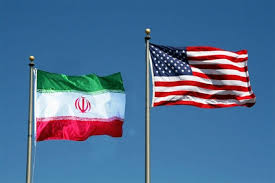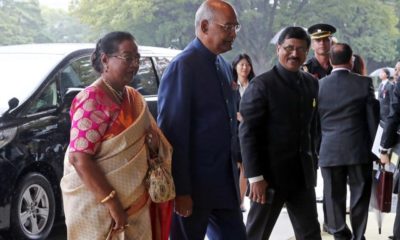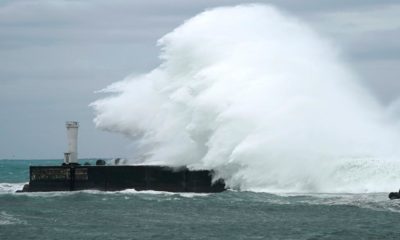Feature
Previous UN sanctions against Pyongyang over n-tests

 Beijing: North Korea launched a long-range rocket on Sunday morning, the country announced.
Beijing: North Korea launched a long-range rocket on Sunday morning, the country announced.
The launch, initially slated for February 8-25 window and later brought forward to between February 7 and February 14, may lead to the UN Security Council slapping fresh sanctions on Pyongyang, Xinhua reported.
The following are previous UN resolutions containing sanction measures adopted after North Korea’s ballistic missile and nuclear tests:
July 15, 2006 — The UN Security Council unanimously approved Resolution 1695 in response to North Korea’s launching seven missiles into waters between Korean Peninsula and Japan, including long-range Taepodong-2 on July 5, 2006.
The resolution urged Pyongyang to re-establish its pre-existing commitments to a moratorium on missile launching.
It also called on all parties concerned to exercise restraint, to take no actions that might deteriorate the tense situation, and to resolve the issue through political and diplomatic means.
October 14, 2006 — The UN Security Council unanimously adopted Resolution 1718 in the wake of North Korea’s first underground nuclear test conducted on October 9, 2006, in North Hamgyong-do in the northeast of the country.
The resolution condemned North Korea’s nuclear test as a “clear threat” to international peace and prohibited Pyongyang from conducting future nuclear tests or launching a ballistic missile.
The sanctions of Resolution 1718 included an embargo against military and technological materials and luxury goods, and prevent the transfer of funds related to missiles, nuclear arms, and other weapons of mass destruction (WMD).
The resolution prohibited trade of heavy weapons, such as tanks, armoured combat vehicles, combat aircraft, attack helicopters, warships, missiles or missile systems.
It also imposed a travel ban on individuals and their families who supported or promoted North Korera’s WMD programmes.
June 12, 2009 — The UN Security Council unanimously adopted Resolution 1874 in response to North Korea’s second nuclear test conducted on May 25, 2009, voicing “the strongest condemnation” against Pyongyang authorities and strengthening previous sanctions stipulated in Resolution 1718.
The resolution expanded the arms embargo by banning all imports and exports of weapons, excluding small arms.
It called upon all UN members to inspect all cargo to and from North Korea within their territories suspected of being containing nuclear and missile-related items.
The resolution also called on all UN members and international lending agencies to refrain from extending new loans and other financial assistance to North Korea other than for humanitarian purposes.
January 22, 2013 — The UN Security Council unanimously adopted Resolution 2087 after North Korea successfully launched and orbited the second version of the Kwangmyongsong-3 satellite on December 12, 2012.
The resolution required Pyongyang to comply with all relevant resolutions approved by the Security Council and not to use the ballistic missile technology for any launch.
It also reiterated to seek a peaceful, diplomatic and political solution to the issues concerned and advocated the renewal of six-party talks over the denuclearisation issue on the Korean peninsula.
March 7, 2013 — The UN Security Council unanimously adopted Resolution 2094 in response to North Korea’s third nuclear test conducted on February 12, 2013.
The resolution demanded that North Korea not proceed with any further nuclear tests, give up any nuclear arms programme and return to the Treaty on the Non-Proliferation of Nuclear Weapons.
The resolution also called for peaceful, diplomatic and political resolution to the current situation and a resumption of the six-party talks.
Under the resolution, UN member states are required to inspect all of North Korea’s maritime and air cargo “within or transiting through their territory” if it’s believed to contain illicit items.
The resolution called on states to deny any North Korean vessel entry to their ports or airfields if the vessel refused to be inspected.
It also expressed its determination to take “further significant measures” in the event of North Korea’s additional rocket launch or nuclear test.
Entertainment
Meghalaya Reserves Legalized Gambling and Sports Betting for Tourists

The State Scores Extra High on Gaming-Friendly Industry Index
Meghalaya scored 92.85 out of 100 possible points in a Gaming Industry Index and proved to be India’s most gaming-friendly state following its recent profound legislation changes over the field allowing land-based and online gaming, including games of chance, under a licensing regime.
The index by the UK India Business Council (UKIBC) uses a scale of 0 to 100 to measure the level of legalisation on gambling and betting achieved by a state based on the scores over a set of seven different games – lottery, horse racing, betting on sports, poker, rummy, casino and fantasy sports
Starting from February last year, Meghalaya became the third state in India’s northeast to legalise gambling and betting after Sikkim and Nagaland. After consultations with the UKIBC, the state proceeded with the adoption of the Meghalaya Regulation of Gaming Act, 2021 and the nullification of the Meghalaya Prevention of Gambling Act, 1970. Subsequently in December, the Meghalaya Regulation of Gaming Rules, 2021 were notified and came into force.
All for the Tourists
The move to legalise and license various forms of offline and online betting and gambling in Meghalaya is aimed at boosting tourism and creating jobs, and altogether raising taxation revenues for the northeastern state. At the same time, the opportunities to bet and gamble legally will be reserved only for tourists and visitors.
“We came out with a Gaming Act and subsequently framed the Regulation of Gaming Rules, 2021. The government will accordingly issue licenses to operate games of skill and chance, both online and offline,” said James P. K. Sangma, Meghalaya State Law and Taxation Minister speaking in the capital city of Shillong. “But the legalized gambling and gaming will only be for tourists and not residents of Meghalaya,” he continued.
To be allowed to play, tourists and people visiting the state for work or business purposes will have to prove their non-resident status by presenting appropriate documents, in a process similar to a bank KYC (Know Your Customer) procedure.
Meghalaya Reaches Out to a Vast Market
With 140 millions of people in India estimated to bet regularly on sports, and a total of 370 million desi bettors around prominent sporting events, as per data from one of the latest reports by Esse N Videri, Meghalaya is set to reach out and take a piece of a vast market.
Estimates on the financial value of India’s sports betting market, combined across all types of offline channels and online sports and cricket predictions and betting platforms, speak about amounts between $130 and $150 billion (roughly between ₹9.7 and ₹11.5 lakh crore).
Andhra Pradesh, Telangana and Delhi are shown to deliver the highest number of bettors and Meghalaya can count on substantial tourists flow from their betting circles. The sports betting communities of Karnataka, Maharashtra, Uttar Pradesh and Haryana are also not to be underestimated.
Among the sports, cricket is most popular, registering 68 percent of the total bet count analyzed by Esse N Videri. Football takes second position with 11 percent of the bets, followed by betting on FIFA at 7 percent and on eCricket at 5 percent. The last position in the Top 5 of popular sports for betting in India is taken by tennis with 3 percent of the bet count.
Local Citizens will Still have Their Teer Betting
Meghalaya residents will still be permitted to participate in teer betting over arrow-shooting results. Teer is a traditional method of gambling, somewhat similar to a lottery draw, and held under the rules of the Meghalaya Regulation of the Game of Arrow Shooting and the Sale of Teer Tickets Act, 2018.
Teer includes bettors wagering on the number of arrows that reach the target which is placed about 50 meters away from a team of 20 archers positioned in a semicircle.
The archers shoot volleys of arrows at the target for ten minutes, and players place their bets choosing a number between 0 and 99 trying to guess the last two digits of the number of arrows that successfully pierce the target.
If, for example, the number of hits is 256, anyone who has bet on 56 wins an amount eight times bigger than their wager.





















